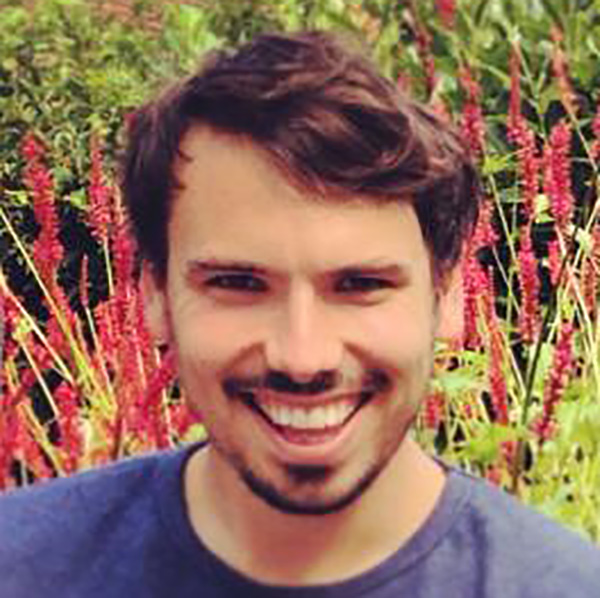Introduction
The National Trust works hard to make sure their visitors’ experiences are emotionally rewarding, intellectually stimulating and inspiring enough that they want to support their cause. We approached National Trust intending to explore new mediums of storytelling through VR while also making inaccessible properties accessible to millions of people who cannot access National Trust properties. Being an innovation exploration project with a small budget, I was the sole person on the project to Lead, Design and Build this VR storytelling experience.
Firstly, I needed to identify the specific barriers to access. I visited a care home for adults, speaking to residents with learning disabilities and dementia, and their carers, listening to their stories and understanding their needs and fears. They talked about the calming effect of walking in gardens, how it allowed memories to resurface and the lucid moments that followed, and how they loved visiting country houses and historic landmarks steeped in history.
The main issues they faced were:
- Ability to physically explore all terrains/floors or get wheelchairs into tight spaces
- The perception that the National Trust might not cater to their needs or interests
- The time available for carers to take them
- Getting to locations and the financial cost of travelling
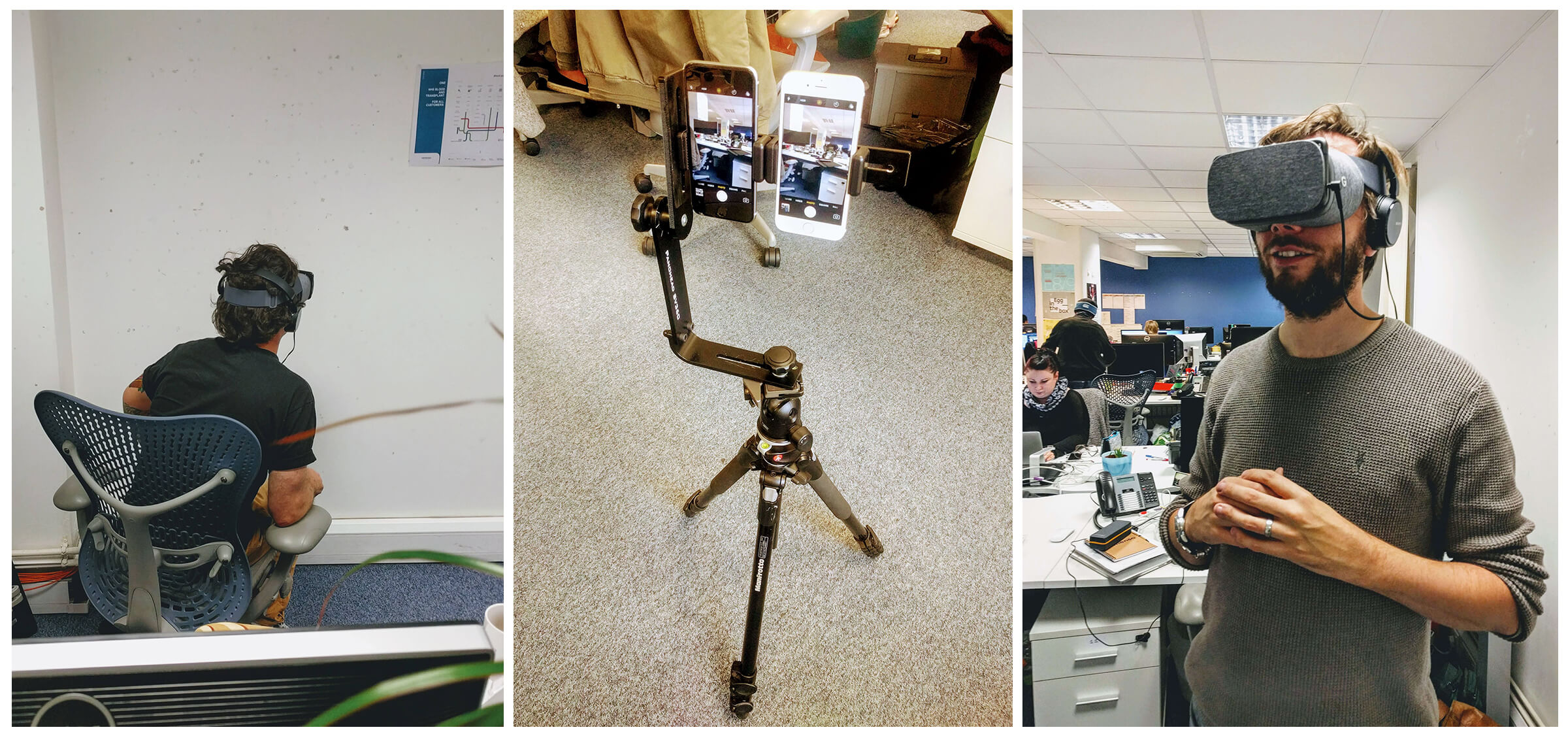
UX Solution
Working closely with the National Trust, I created a VR solution that emulated the experience of exploring a property realistically, throwing open the doors of their properties to anyone, across the world, regardless of impairments.
I chose to use WebVR and the A-frame framework because it was the most efficient use of limited time to build a VR experience, I could use my HTML and JavaScript knowledge, it is easily discoverable online; there is no installation or software required outside the browser and it can be viewed on any device. Users get a 2D 360 experience through mobile, tablet and desktop. A VR headset allows users a more immersive 3D 360 experience.
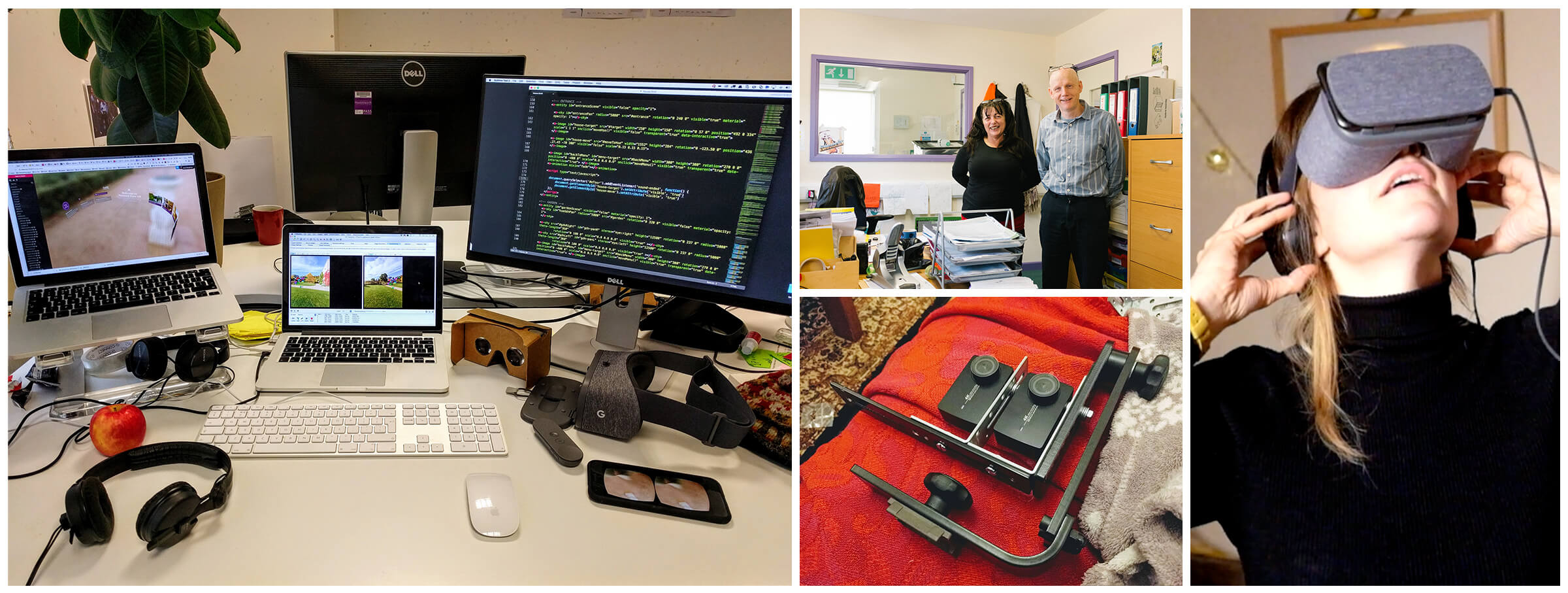
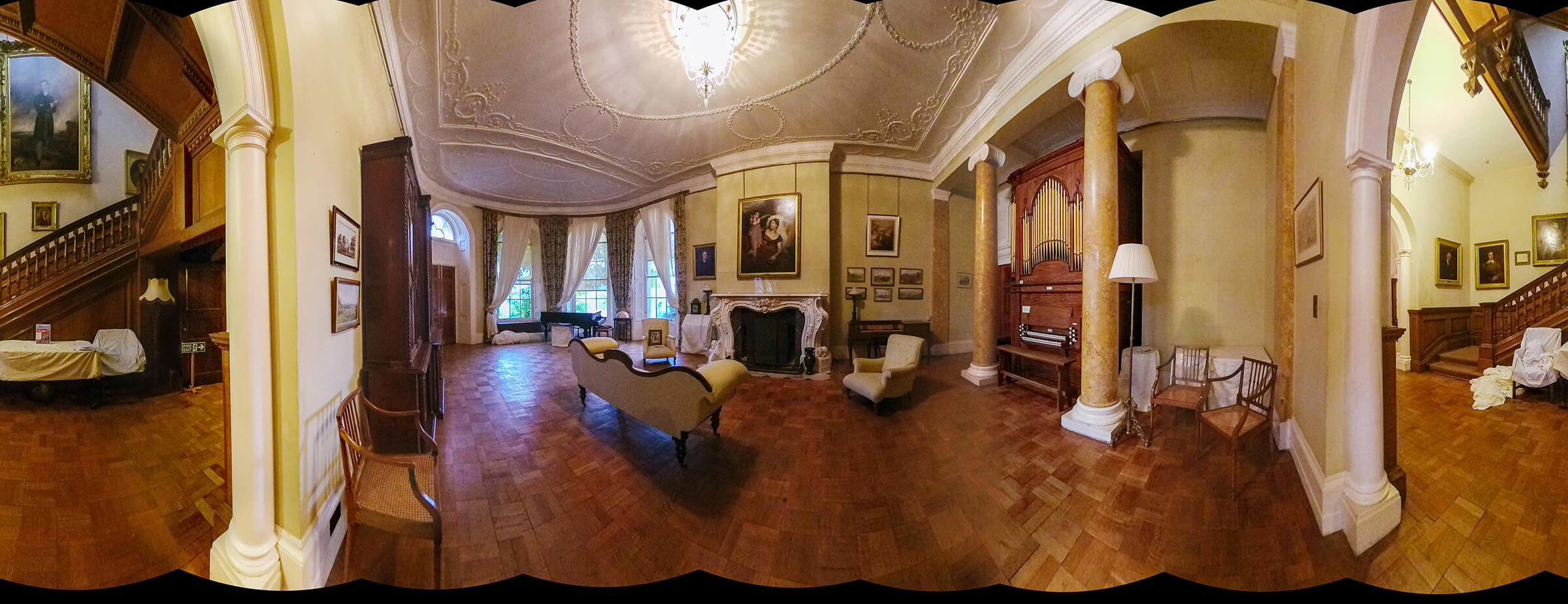
This technology choice opens up this experience to everyone on any device. Some of the people we spoke to were nervous about having things on their faces or had trouble locating themselves in space without visual references, so this was important.
VR experience
The location we chose to bring to life with VR was Killerton House; an 18th Century landmark in the Devon countryside, packed with historic connections. I spent time there, interviewing staff to gather stories, record ambient sounds, and capture 360 3D images. I used the 360 images to create various environments, added trigger points within these to display pictures, text and sound effects adding plot points within those locations. These environments are interconnected to allow a user to explore the house and grounds in order of their preference, allowing them the freedom to explore and drive their narrative.
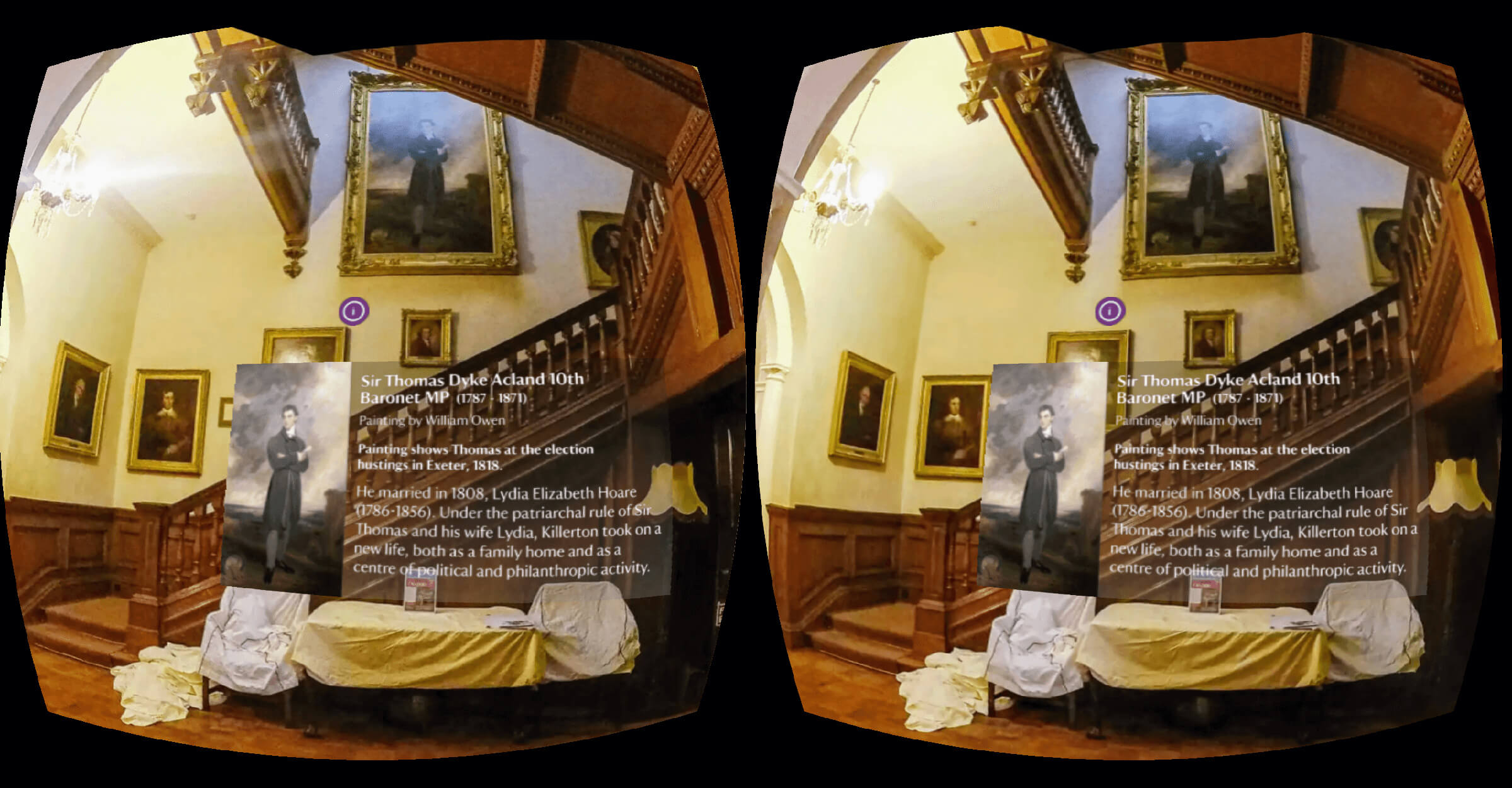
I took the finished VR experience back to the care home for feedback. It created quite a buzz! They reported feelings of immersion, enrichment, and relief from anxiety as they explored the nooks and crannies of Killerton. VR presents a strong feeling of presence for a user which can be beneficial for people with dementia, taking them back to a previous time and unlocking memories.
The National Trust could now offer inclusive experiences, dissolving all barriers to their properties, widening their reach, raising their profile and forming deeper connections with their audience around the world. What’s more, this is a vital demonstration of the importance of embracing VR technology to improve the quality of lives for those living with impairments across the world.
by Gareth Williams
I pride myself on turning complex problems into simple and engaging experiences, through a multidisciplinary skill set, empowering teams and 10+ years of industry experience. If you'd like to chat please get in touch.
